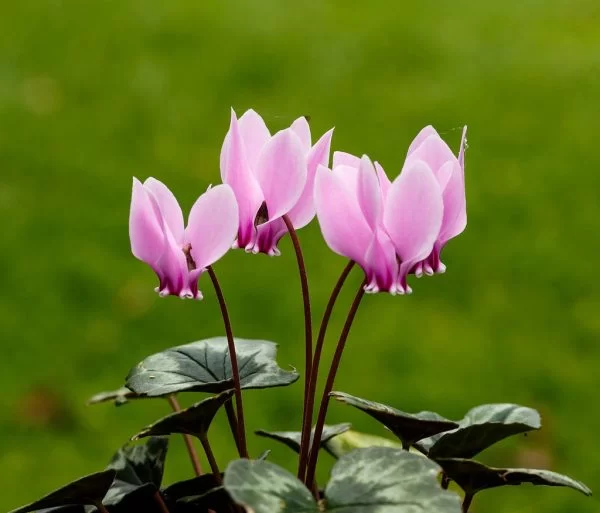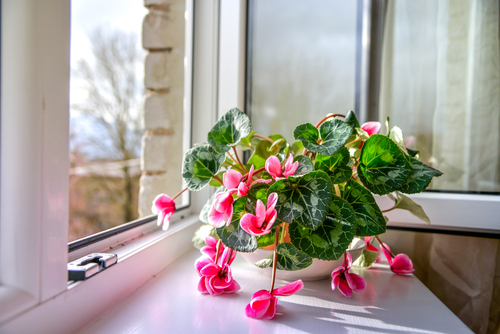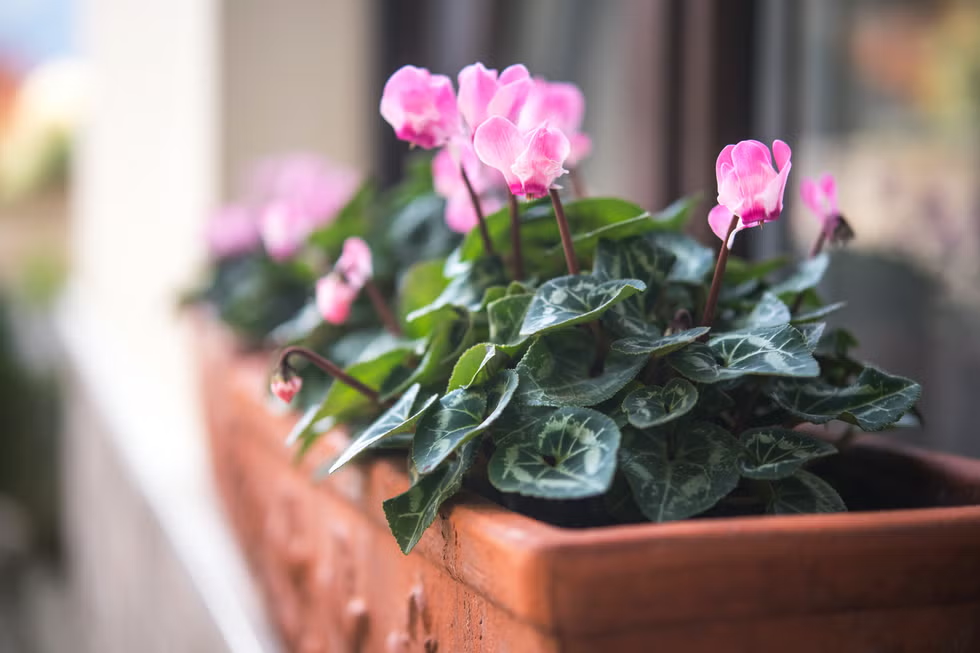Cyclamen plants are cherished for their delicate, colorful flowers and beautifully patterned leaves. These plants are ideal for brightening up any indoor space. However, caring for cyclamens indoors requires a little knowledge to keep them healthy and blooming. Let’s dive into a simple and practical guide to help you care for your cyclamen plant indoors.
Plant Overview
Cyclamen is a tuberous plant that blooms during the cooler months, making it a popular choice for winter gardens. Native to the Mediterranean region, cyclamens thrive in cool, well-lit environments. Their charming flowers range in colors like pink, white, red, and purple, adding a vibrant touch to homes. Besides their beauty, cyclamens have been symbols of love and affection in various cultures, making them an even more meaningful addition to your indoor space.

Light Requirements
Cyclamens love bright, indirect light. Place your plant near a north- or east-facing window for the best results. Avoid direct sunlight, as it can scorch the leaves and flowers. If natural light is limited, you can use a grow light to supplement. When positioning your cyclamen, rotate the pot every few days to ensure even growth and prevent the plant from leaning toward the light source.
Watering Needs
Watering cyclamens requires a bit of care. Always water from the bottom by placing the pot in a saucer of water and letting the soil soak it up. This prevents water from settling on the crown, which can lead to rot. Water the plant when the soil feels dry to the touch, but don’t let it completely dry out. In warmer homes, you may need to water more frequently, but always check the soil moisture first to avoid overwatering.
Humidity and Temperature
Cyclamens prefer cool temperatures between 50-68°F (10-20°C). Keep them away from heat sources like radiators or fireplaces. While they don’t require high humidity, misting the air around them during dry winters can be beneficial. Avoid misting directly onto the leaves or flowers. If your home tends to be dry, consider placing a small humidifier nearby or grouping the cyclamen with other plants to create a more humid microclimate.
Soil and Fertilizer
It’s better to use a well-draining potting mix, such as a combination of peat and perlite. Cyclamens thrive in slightly acidic soil. Fertilize every two weeks during the growing season (fall and winter) with a diluted liquid fertilizer formulated for flowering plants. We recommend avoiding fertilizing during their dormant period in summer. To enhance growth, consider using a slow-release fertilizer at the beginning of the growing season to provide consistent nutrients over time.
Pruning and Maintenance

Remove faded flowers and yellowing leaves by gently twisting and pulling them off at the base. This helps the plant focus its energy on producing new growth. Keep the area around the plant clean to prevent pests and diseases. Regularly inspect your cyclamen for signs of stress or damage, such as drooping leaves or discolored flowers, and address the underlying issues promptly.
Common Issues and Solutions
- Yellowing Leaves: This could indicate overwatering or exposure to heat. Adjust the watering schedule and move the plant to a cooler spot.
- No Flowers: Lack of blooms often results from insufficient light or over-fertilizing. Ensure the plant gets enough indirect light and avoid overfeeding.
- Pests: Cyclamens can attract aphids or spider mites. Use a mild insecticidal soap to keep pests at bay. Regularly wipe the leaves with a damp cloth to remove dust and discourage pests.
- Crown Rot: Overwatering can lead to rot at the base of the plant. Ensure proper drainage and avoid letting water sit on the crown.
Propagation Tips
Cyclamens are typically propagated from seeds, which requires patience. Collect seeds from the plant after flowering and sow them in a seed tray with moist potting mix. Keep the tray in a cool, dark place until germination. This process can take several months, but the reward is worth the wait. Propagation from tubers is challenging and not commonly done indoors, but if attempted, ensure the tubers are healthy and free from rot.

Benefits of Growing Cyclamen Indoors
Cyclamens are not only beautiful but also provide several benefits:
- They purify indoor air, creating a healthier environment.
- Their vibrant flowers brighten up homes during winter, a time when many other plants are dormant.
- Caring for cyclamens can be a therapeutic activity for plant lovers, helping reduce stress and improve mental well-being.
- Cyclamens are relatively compact, making them an excellent choice for small spaces.
Final Thoughts
Cyclamen plants are a delightful addition to any indoor garden. With proper light, watering, and care, they reward you with stunning blooms and foliage throughout the cooler months. Remember to give them a little extra attention during their active season and let them rest during dormancy. Cyclamens are more than just plants—they’re companions that bring joy and beauty to your home. Follow this guide, and your cyclamen plant will thrive indoors, bringing joy and color to your home.
Happy gardening!

